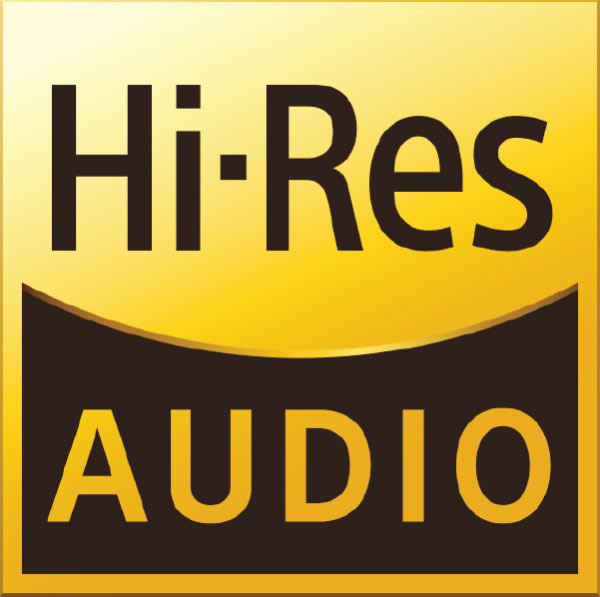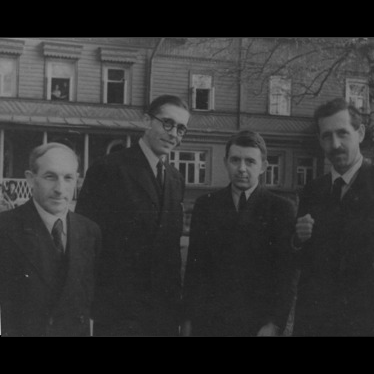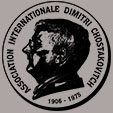Catégorie : Non classé
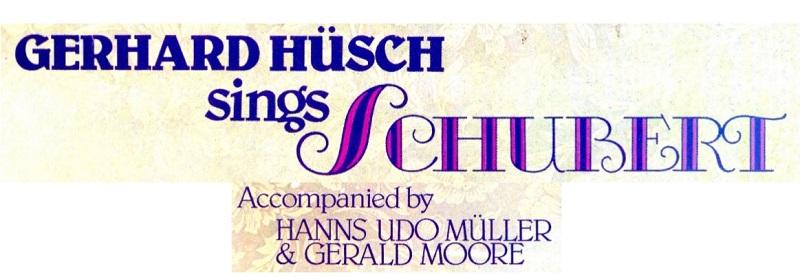
Gerhard Hüsch – Hanns-Udo Müller & Gerald Moore (D.957 n° 7, 10, 12 & 14)
Source: 33t/LP World Records Retrospect Series SHB 65 (1980)
Enregistrement/ Recording: Berlin 1934-1939
Report/Transfer: Keith Hardwick


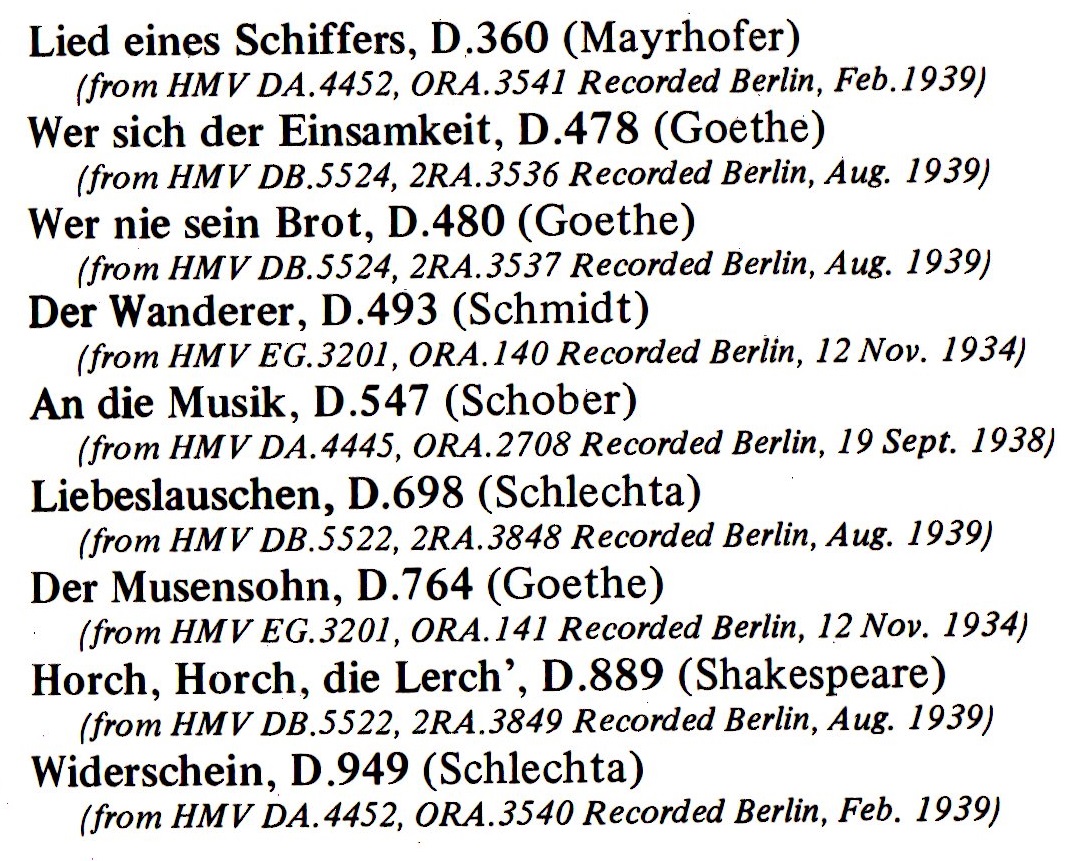
A part les cycles ‘Die schöne Müllerin ‘ et ‘Die Winterreise’ Gerhard Hüsch a enregistré avant-guerre un certain nombre de Lieder de Schubert dont 6 sont issus du recueil ‘Schwanengesang’ D.957 en y incluant Die Taubenpost (D.957 ‘n°14’ = D.965A). Trois de ces Lieder sont sur des poèmes de Heine, que le régime nazi n’allait pas tarder à interdire complètement.
Le texte joint au disque comporte quelques erreurs notamment sur les numéros de catalogue Deutsch qui ont été corrigés dans les fichiers numériques sur la base des informations de l’indispensable site https://www.schubertsong.uk .

Apart from the ‘Die schöne Müllerin’ and ‘Die Winterreise’ cycles, Gerhard Hüsch recorded a number of Schubert songs before the war, six of which are from the collection ‘Schwanengesang’ D.957 if we include Die Taubenpost (D.957 ‘n°14’ = D.965A). Three of these songs are set to poems by Heine, which the Nazi regime was soon to ban completely.
The text accompanying the disc contains a few errors, notably in the Deutsch catalogue numbers, which have been corrected in the digital files on the basis of information from the indispensable website https://www.schubertsong.uk/.
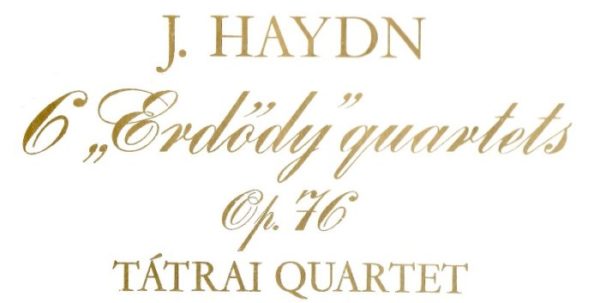
Haydn Quartets Op. 76 n° 4 – 6
Tátrai Quartet: Vilmos Tátrai, Mihály Szűcs, violin I & II; György Konrád, viola; Ede Banda, cello
Enr/Rec: Budapest 1964 – Prod: Dóra Antal (n°4 & 5); János Mátyás (n°6)
Eng: László Csintalan (n°4 & 5) ; Endre Radányi (n°6)
Source: 33t/LP Qualiton LPX 1205-7
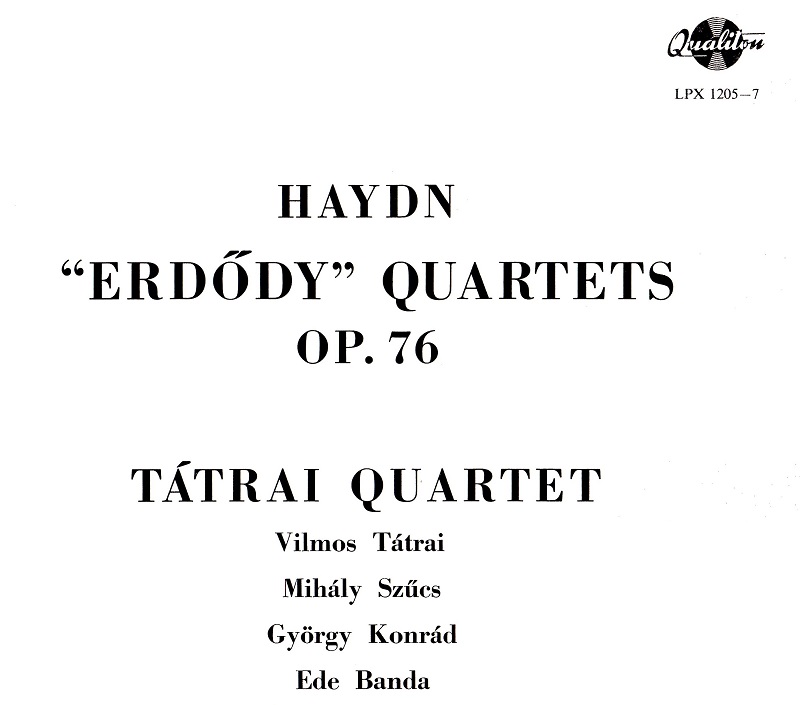
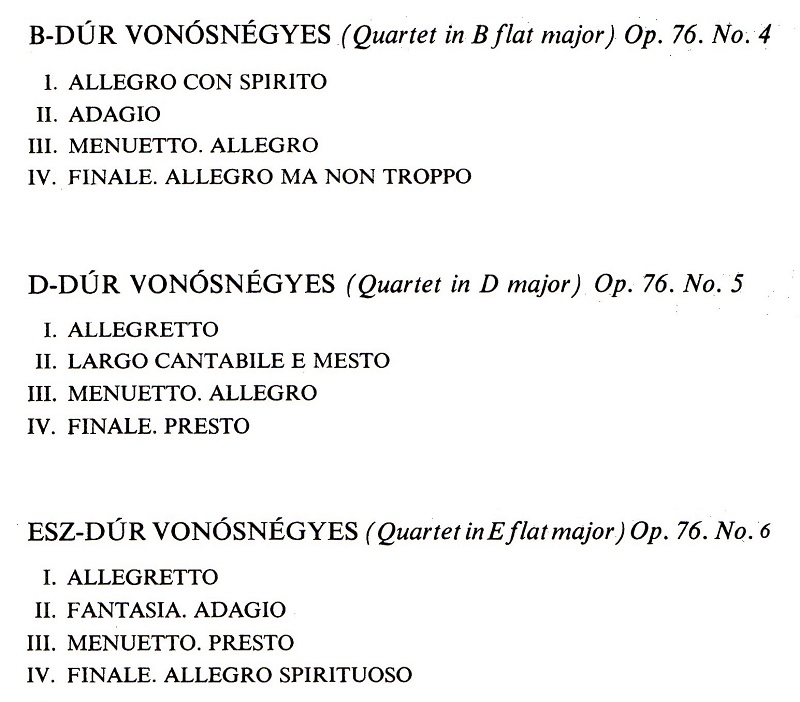
Voici le deuxième volet de l’Opus 76 de Joseph Haydn avec les Quatuors n°4 à 6 dans la version de référence du Tátrai Quartet. Bonne écoute!
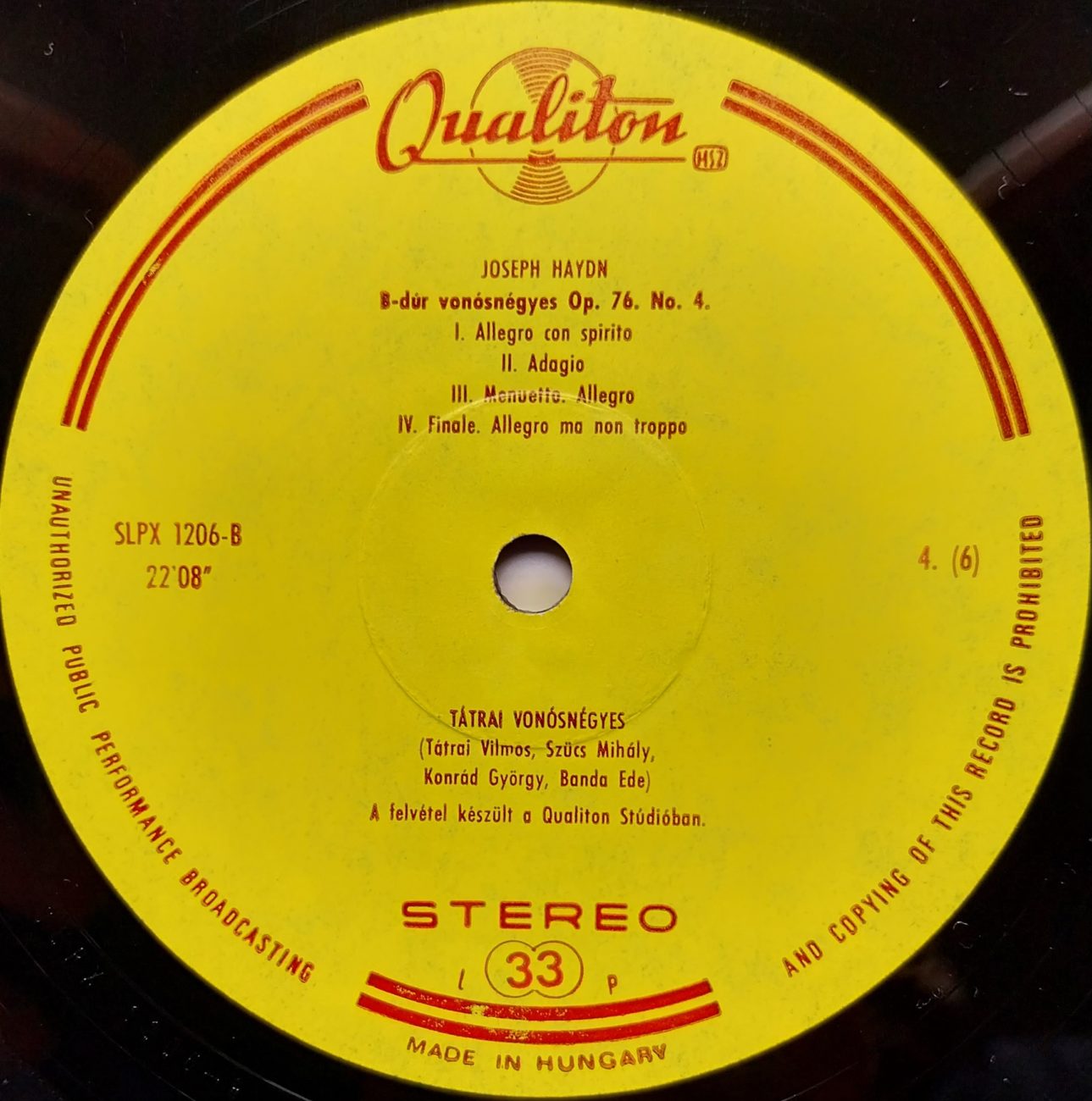
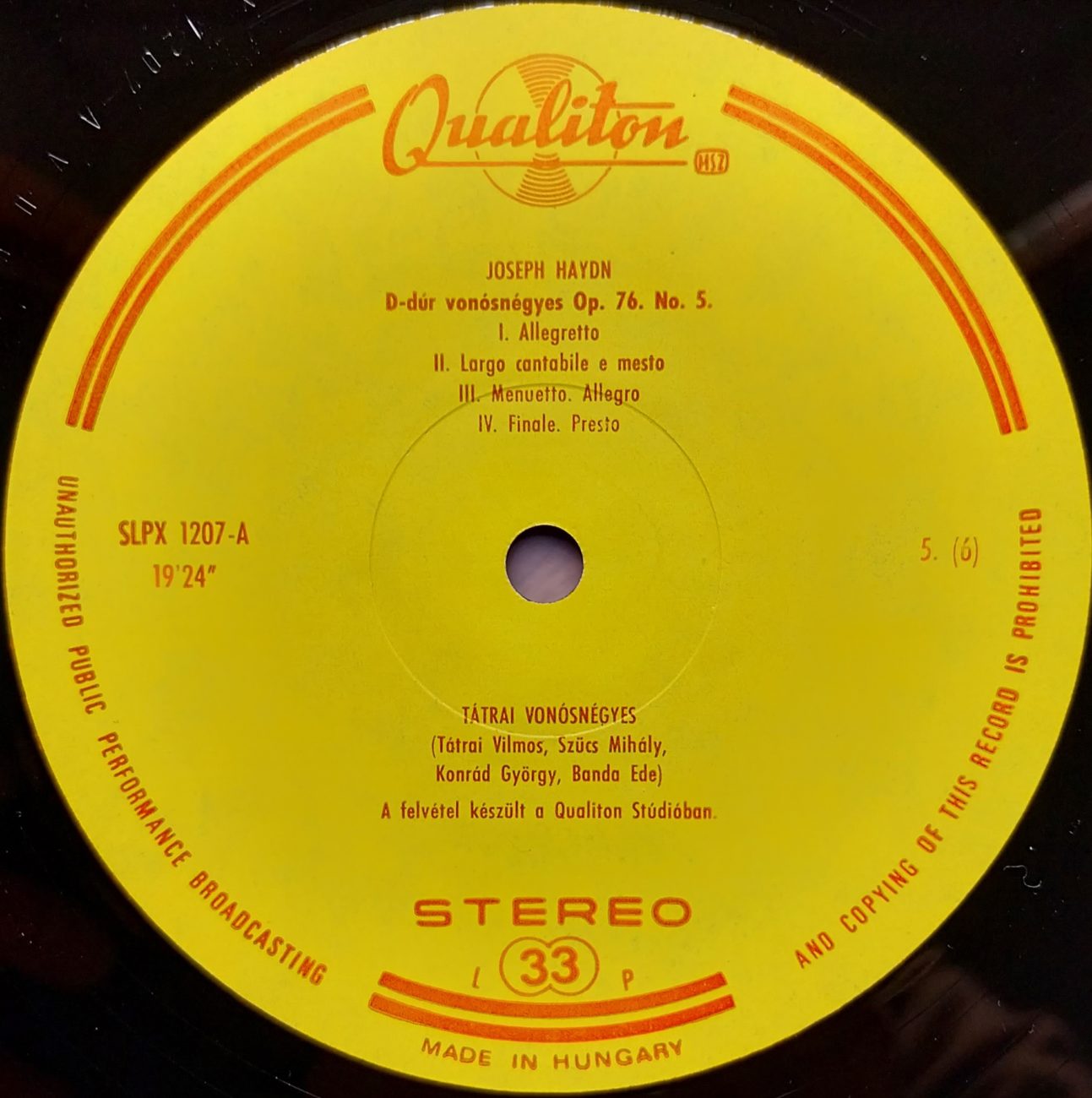
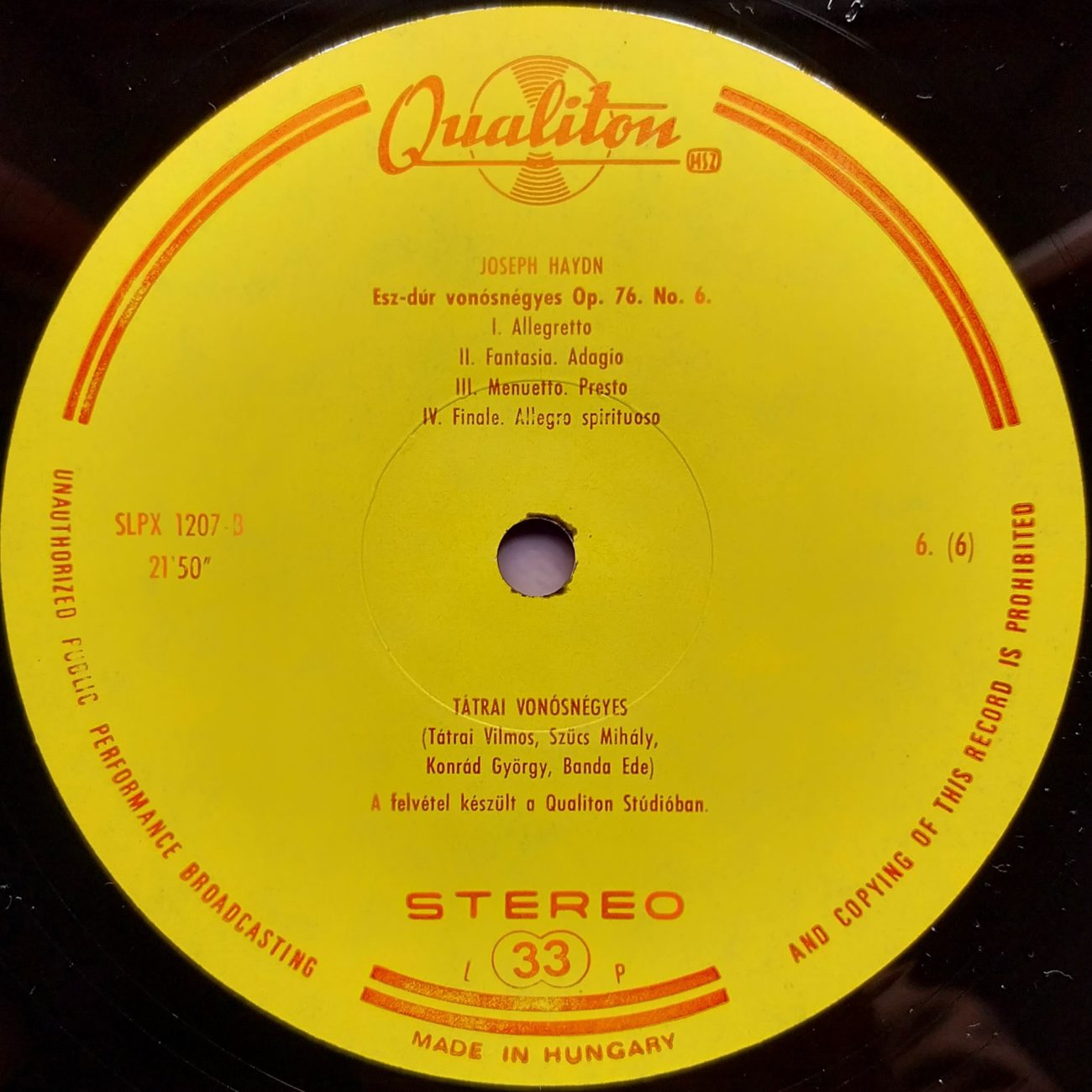
Here is the second part of Joseph Haydn’s Opus 76 with the Quartets n°4 to 6 in the reference version of the Tátrai Quartet. Enjoy your listening!

Haydn Quartets Op. 76 n° 1 – 3
Tátrai Quartet: Vilmos Tátrai, Mihály Szűcs, violin I & II; György Konrád, viola; Ede Banda, cello
Enr/Rec: Budapest 1964 – Prod: Dóra Antal (n°1 & 3); János Mátyás (n°2)
Eng: László Csintalan (n°1 & 3) ; Endre Radányi (n°2)
Source: 33t/LP Qualiton LPX 1205-7

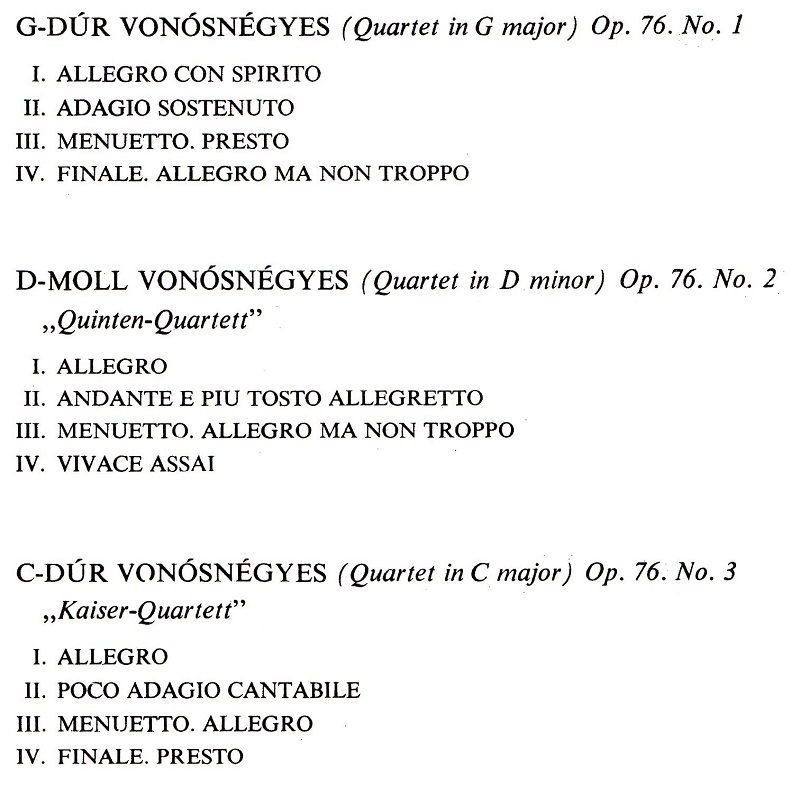
Le Quatuor Tátrai a commencé par cet Opus 76 en 1964 son enregistrement de l’intégrale des Quatuors de Haydn qu’il mettra vingt ans à mener à bien. Ces disques ont été considérés dès leur parution comme une version de référence. D’ailleurs, Sviatoslav Richter appréciait cet enregistrement. Les microsillons de la firme Qualiton ont été réalisés avec le plus grand soin depuis la prise de son jusqu’à la gravure et le pressage. Par contre, les reports en CD sous le label Hungaroton sont décevants. Un nouveau report à partir des microsillons s’impose donc.
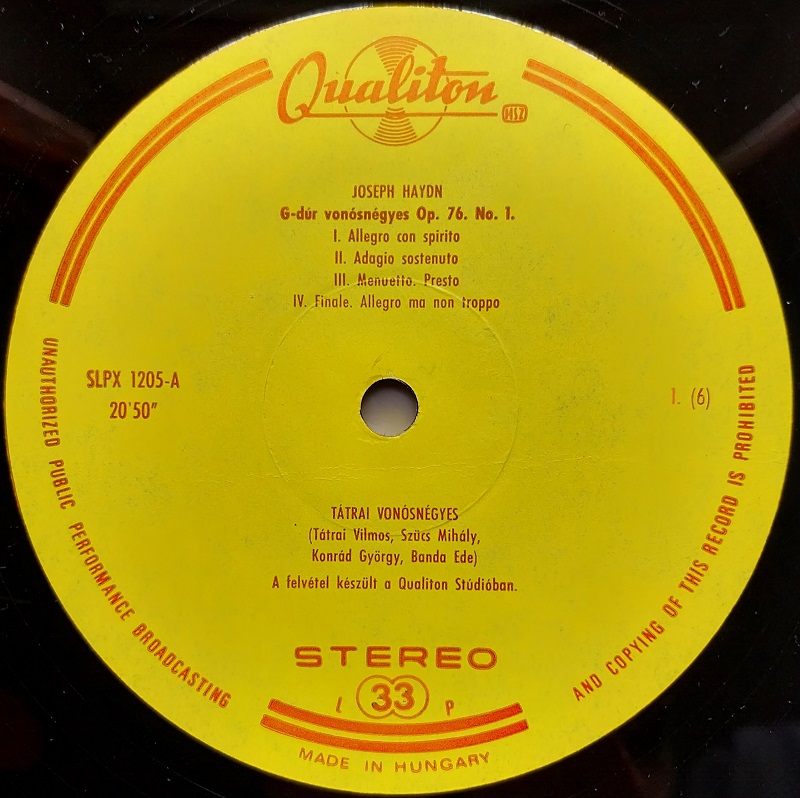
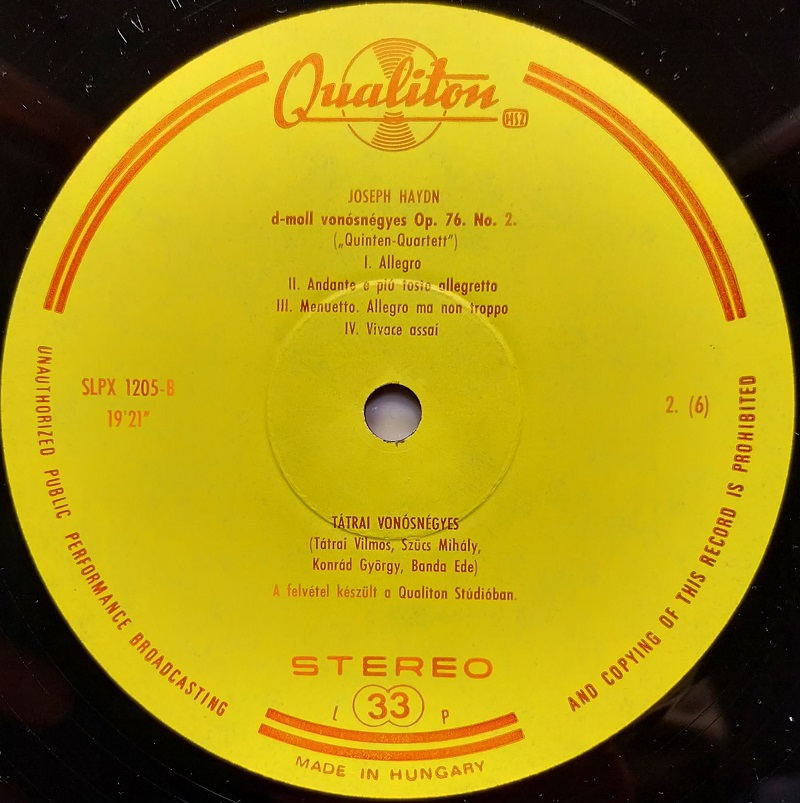
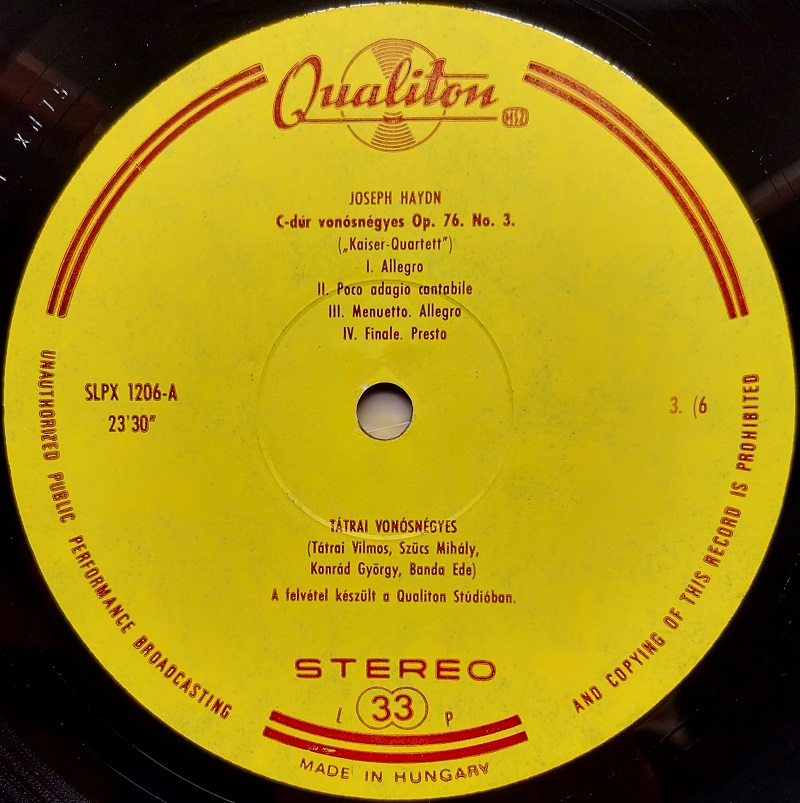
The Tátrai Quartet began their complete recording of the Haydn Quartets with this Opus 76 in 1964, a project that took them twenty years to complete. These LPs have been considered a reference version since their release. We know that Sviatoslav Richter appreciated this recording. The LPs on the Qualiton label were made with the greatest care, from the recording to the engraving and pressing. On the other hand, the reports on CD under the Hungaroton label are disappointing. A new transfer from the LPs is therefore welcome.
A la demande amicale d’un habitué de ce blog / By request of a friend of this blog.

Furtwängler – Franck Symphonie WPO
Wilhelm Furtwängler Wiener Philharmoniker (WPO)
Wien Musikvereinsaal – 14 & 15 Dezember 1953 Prod: Victor Olof – Eng: Cyril Windebank
Source: 33t/LP Decca Classiques 592107
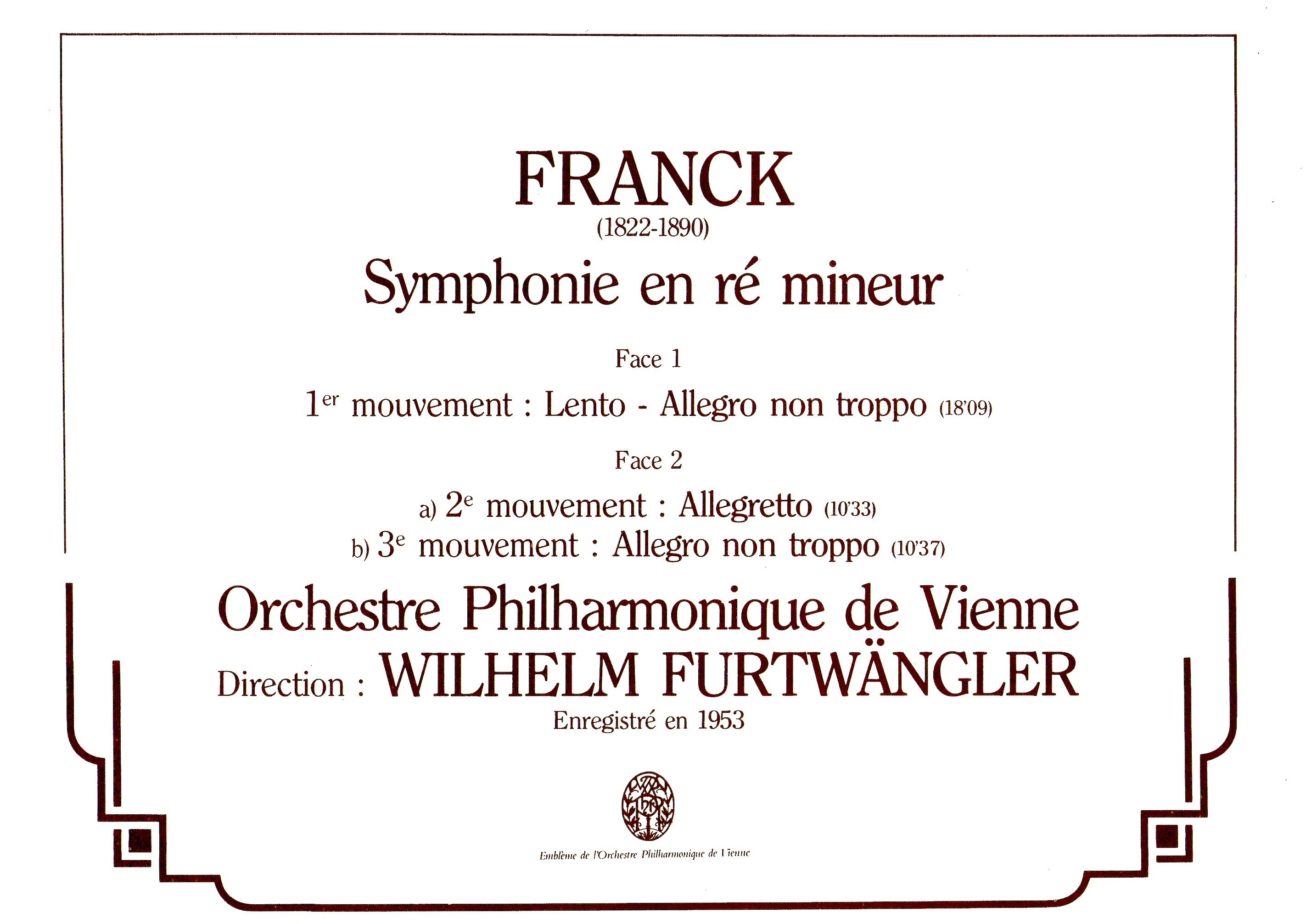
En décembre 1953, Furtwängler retrouve le producteur Victor Olof et la firme Decca pour enregistrer la Symphonie de Franck, avec un autre ingénieur du son, Cyril Windebank.
Du point de vue de la qualité sonore, c’est un des tous meilleurs de la discographie de Furtwängler.
Le microsillon Decca Classiques 592107, publié en France en 1982, est parfait, tant du point de vue de l’équilibre tonal et de la dynamique que de la qualité de la gravure. C’est donc ce que l’on appelle une ‘copie droite’ que nous pouvons vous proposer.
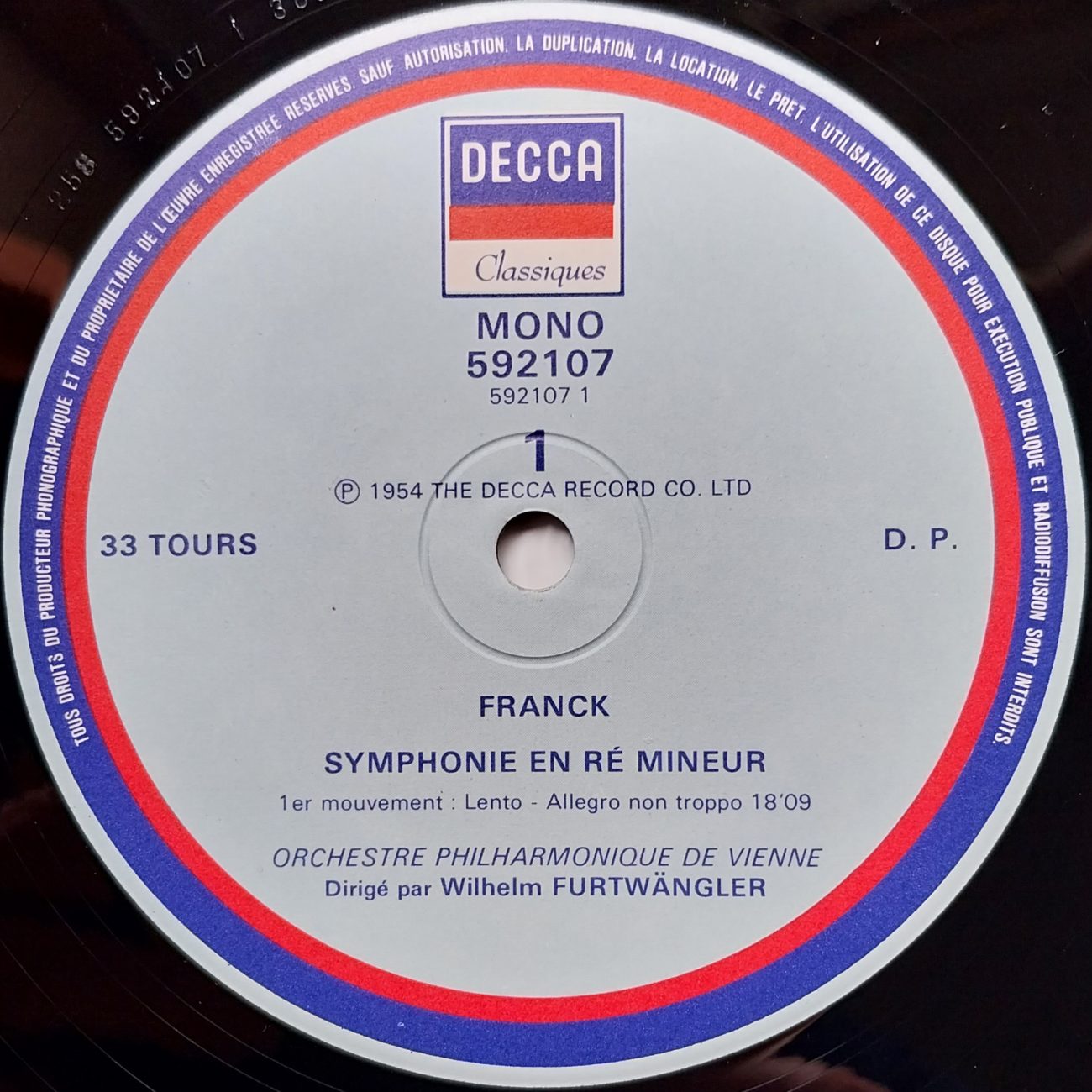

In December 1953, Furtwängler worked again with producer Victor Olof and Decca to record Franck’s Symphony, with another sound engineer, Cyril Windebank.
From the point of view of sound quality, it is one of the best in Furtwängler’s discography.
The Decca Classiques 592107 LP, released in France in 1982, is perfect, as much from the point of view of tonal balance and dynamics as from the quality of the disc itself. It is therefore a so-called ‘direct copy’ that we can offer you.
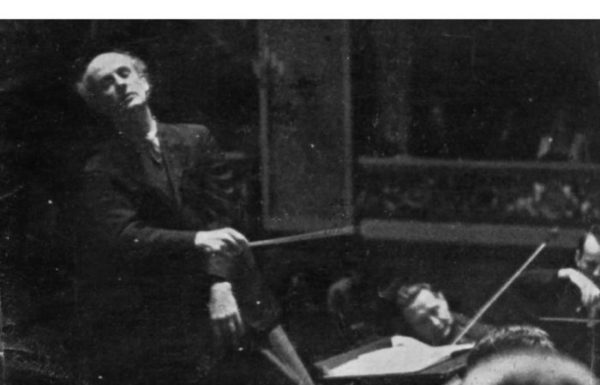

Kingsway Hall – 20,22,24 & 25 March 1948 Prod: Victor Olof – Eng: Kenneth Wilkinson
Source: 33t/LP Decca ACL 50 (1959)*

Entre le 29 février et le 25 mars 1948, Furtwängler a donné une série de dix concerts avec le LPO dont six à Londres et quatre en tournée, avec notamment au programme les quatre symphonies de Brahms (la Deuxième a été jouée à Londres le 11 mars), le dernier concert, le 25 mars,ayant été consacré à la Neuvième de Beethoven. Quatre jours d’enregistrement ont été consacrés à cette Deuxième (20,22,24 et 25 mars), et le 26 mars, Furtwängler a enregistré pour EMI l’Immolation de Brünnhilde avec Kirsten Flagstad et le Philharmonia, avant de partir pour une série de concerts à Buenos Aires.
La reproduction du son de cet enregistrement de la Deuxième de Brahms a toujours été problématique, et ce pour plusieurs raisons. John Culshaw raconte dans son livre ‘Putting the Record Straight’ que Furtwängler aurait refusé l’utilisation de plusieurs microphones, si bien que la captation a eu lieu avec un seul microphone, ce qui était cependant une pratique relativement courante à l’époque. Par exemple, DGG a enregistré de cette façon à la Jesus Christ Kirche de Berlin en 1953 la Symphonie n°4 de Schumann avec Furtwängler et le BPO. Toutefois Decca n’utilisait pas cette méthode et il se peut que cela ait créé des difficultés, car la prise de son par Decca de cette symphonie de Brahms manque peut-être un peu de présence, quoique, lors de la sortie des 78tours, EMG Letter a loué la chaleur du son dans l’excellente acoustique de Kingsway Hall. A ceci s’ajoute le problème lié à la définition de la courbe de gravure FFRR utilisée par Decca pour les microsillons (le disque LXT 2586 est paru en juin 1951), car l’éditeur en a utilisé plusieurs versions au début des années cinquante sans que les disques renseignent l’exacte version mise en œuvre.
La réédition de 1959 dans la collection ‘Ace of Clubs’ (ACL 50) permet de lire ce microsillon avec la bonne courbe FFRR, et de restituer la prise de son avec son équilibre tonal d’origine. On notera que lire ce disque avec la courbe RIAA qui est devenu un standard depuis les années 80, donne un son déséquilibré, et on perd beaucoup de l’interprétation, notamment avec un manque de graves qui affecte beaucoup la dynamique.
La prise de son est très musicale, et reproduit l’ambiance de salle du Kingsway Hall. On perçoit bien le son caractéristique de Furtwängler, ainsi que le fait que l’orchestre n’a pas la profondeur de son du BPO ou du WPO, ce qui n’est pas forcément un inconvénient pour cette œuvre.
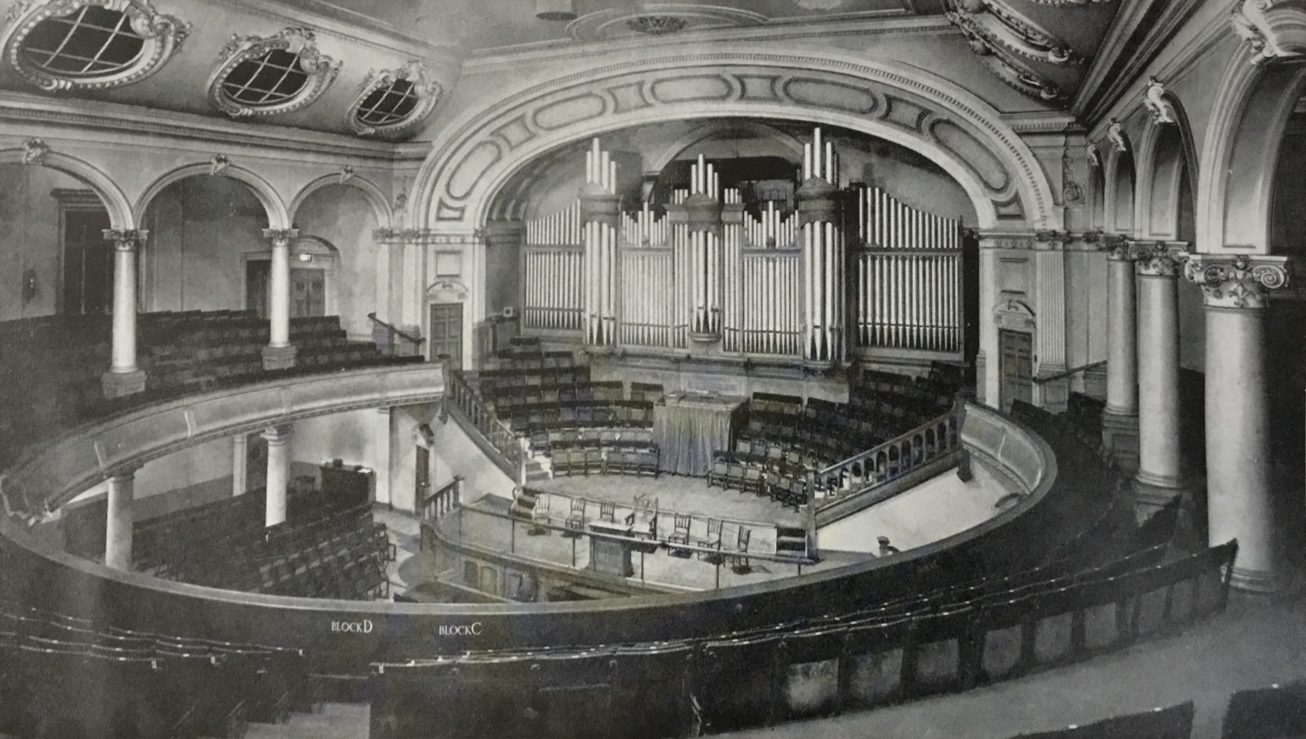
Kingsway Hall
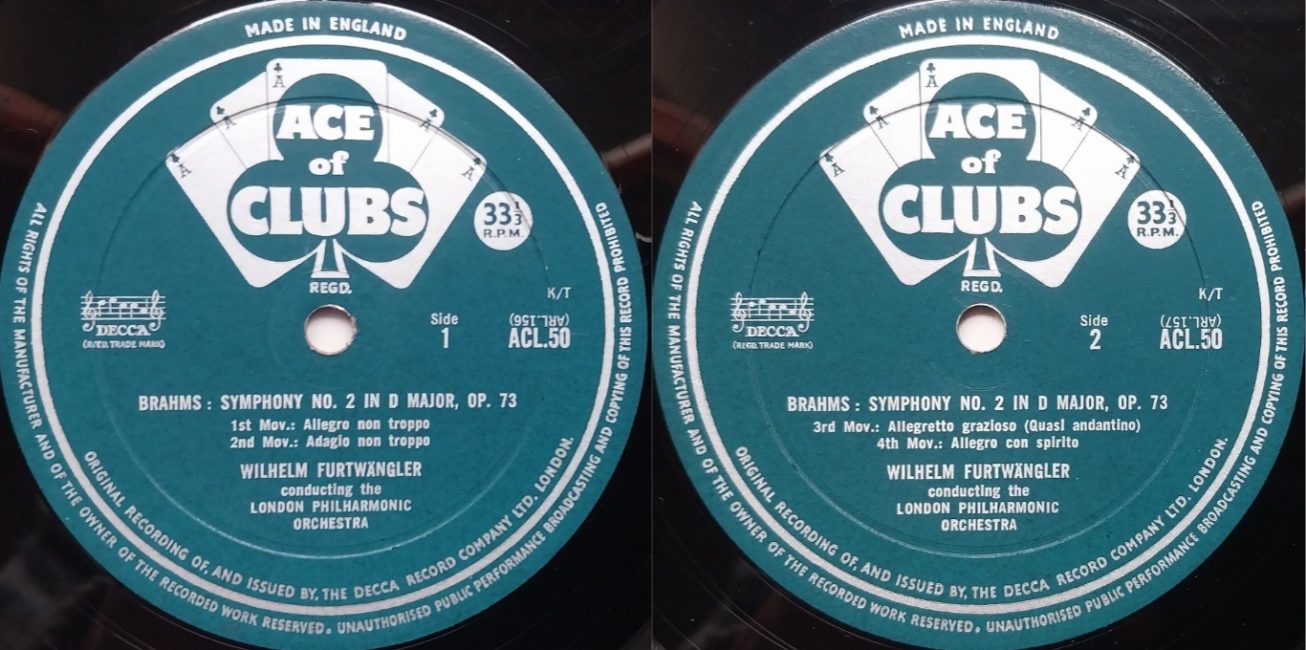
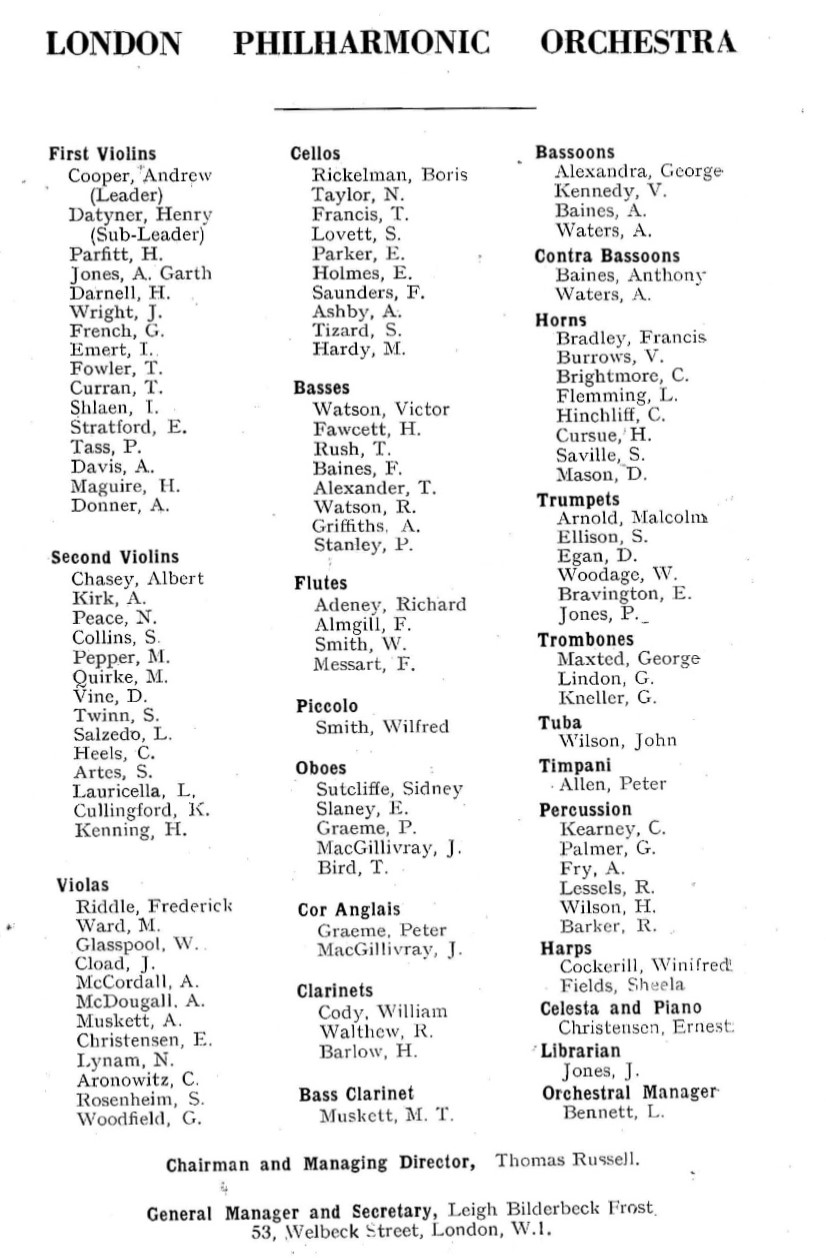
LPO Members – 1948
Between February 29 and March 25 1948, Furtwängler gave a series of ten concerts with the LPO, six in London and four on tour, with among others Brahms’ four symphonies on the program (the Second was played in London on March 11), and the last concert, on March 25, was devoted to Beethoven’s Ninth. Four days of recording were devoted to this Second symphony (March 20, 22, 24 and 25), and on March 26, Furtwängler recorded for EMI Brünnhilde’s Immolation with Kirsten Flagstad and the Philharmonia, before leaving for a series of concerts in Buenos Aires.
The reproduction of the sound of this recording of Brahms’ Second has always been problematic, for several reasons. John Culshaw tells us in his book ‘Putting the Record Straight’ that Furtwängler refused to use several microphones, so the recording was made with only one microphone, which was however a relatively common practice at the time. For example, DGG recorded Schumann’s Symphony no. 4 with Furtwängler and the BPO at the Jesus Christ Kirche in Berlin in 1953. However, Decca did not use this method and this may have created difficulties, as Decca’s recording of this Brahms symphony perhaps lacks a bit of presence, although when the 78s were released, EMG Letter praised the warmth of the sound in the excellent acoustic of Kingsway Hall. Added to this is the problem of the definition of the FFRR curve used by Decca for the LPs (LXT 2586 was released in June 1951), as the publisher used several versions of it in the early 1950s without the discs providing information on the exact version used.
The 1959 reissue in the ‘Ace of Clubs’ collection (ACL 50) allows to play this LP with the correct FFRR curve, to restore the recording with its original tonal balance. It should be noted that playing this record with the RIAA curve, which has become a standard since the 80’s, gives an unbalanced sound, and we lose a lot of the interpretation, especially with a lack of bass which severely affects the dynamics.
The sound recording is very musical, and reproduces the atmosphere of the Kingsway Hall. One can hear Furtwängler’s characteristic sound, as well as the fact that the orchestra does not have the depth of sound of the BPO or the WPO, which is not necessarily a drawback for this work.
